NCERT Solutions for Class 9 Geography Chapter 6 – Population
NCERT Solutions for Class 9 Geography Chapter 6 – Population are essential for understanding demographic concepts in the CBSE curriculum. These well-structured answers help students grasp topics like population size, distribution, density, growth, and age structure in India. Designed as per the latest syllabus, these solutions strengthen conceptual clarity and improve exam preparation. Ideal for revision and practice, they promote data interpretation and socio-geographic analysis, making them a valuable study tool for scoring well in Class 9 Social Science exams.
NCERT Solutions For Class 9 Geography – Population – Exercise Images
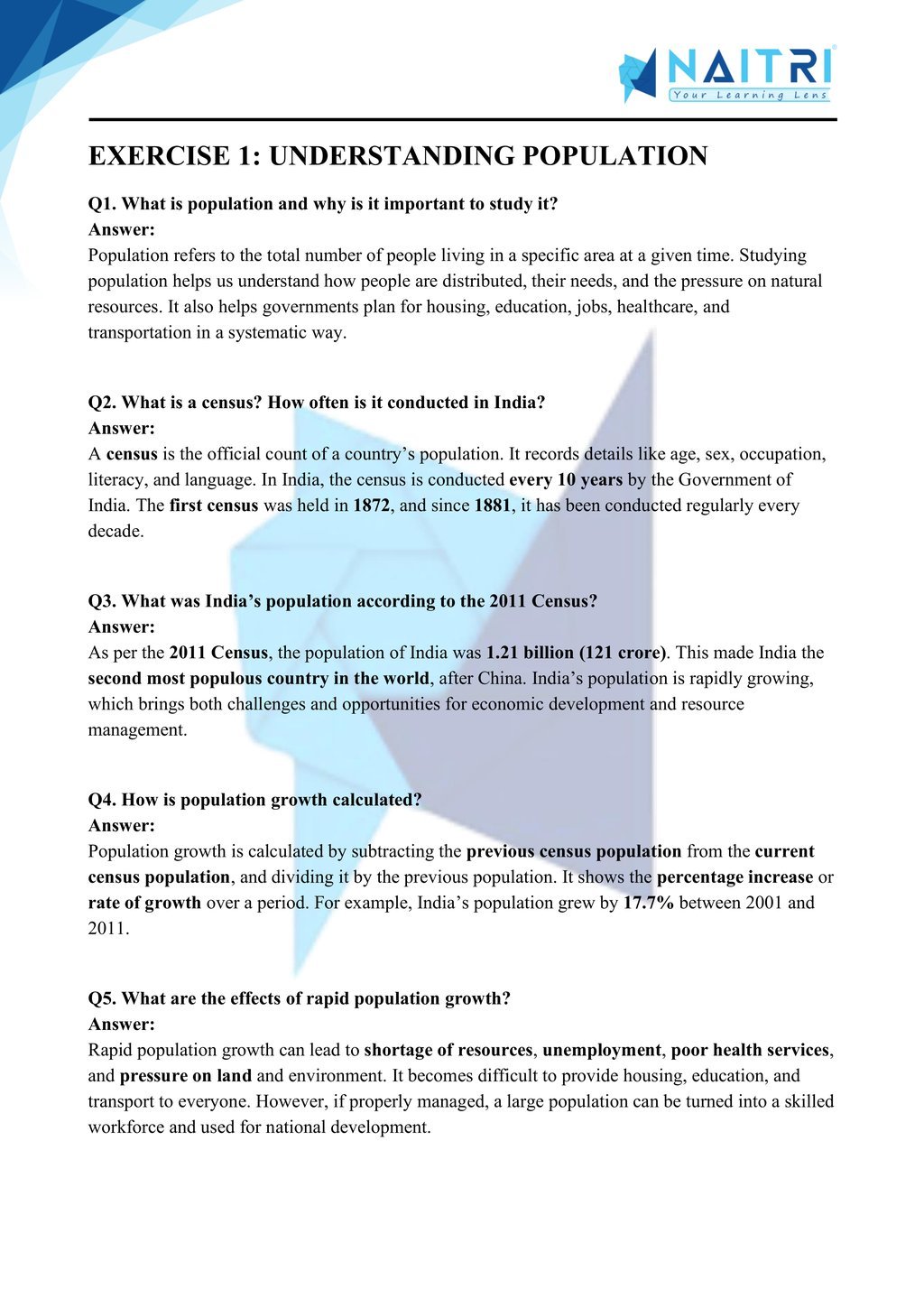
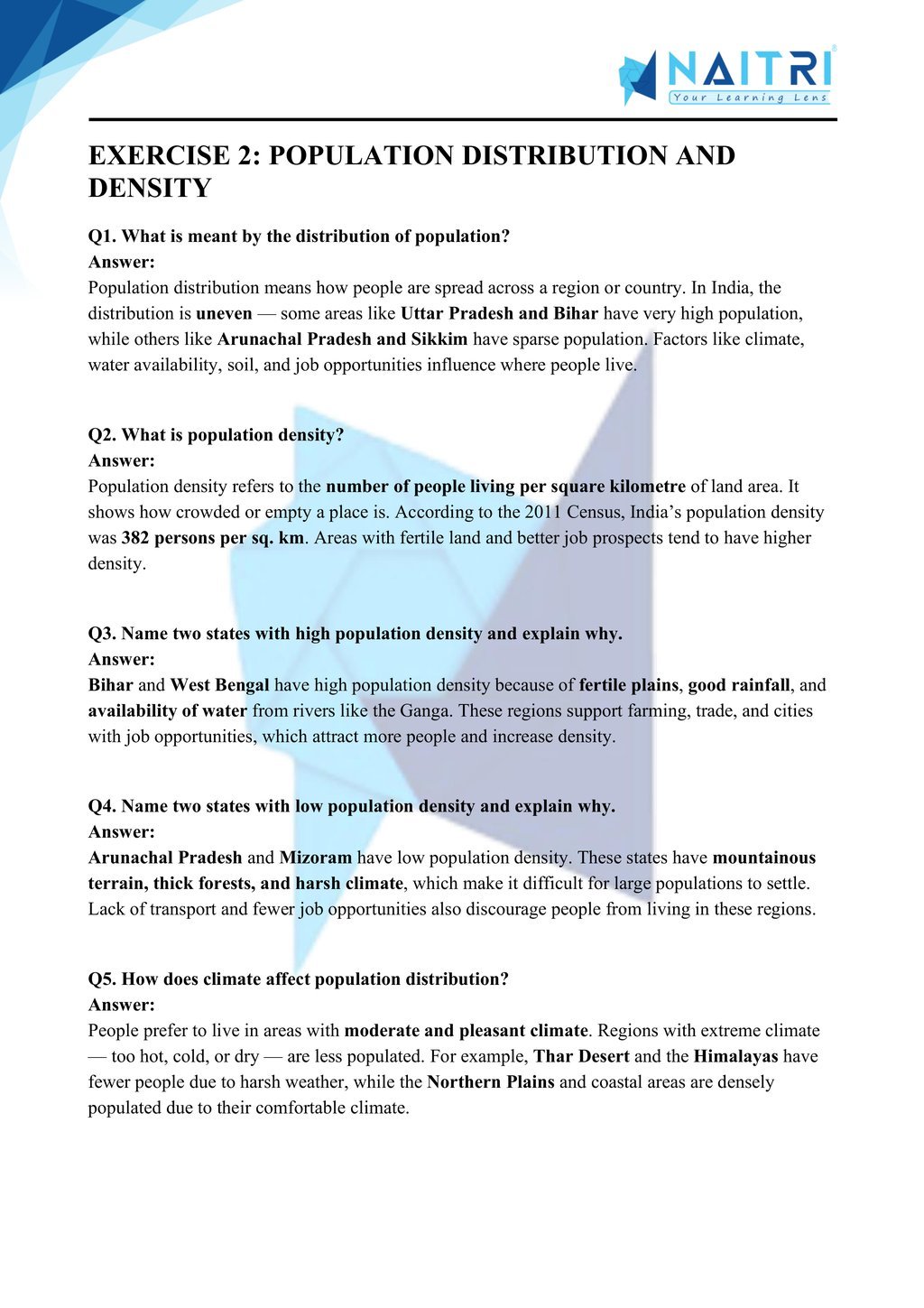
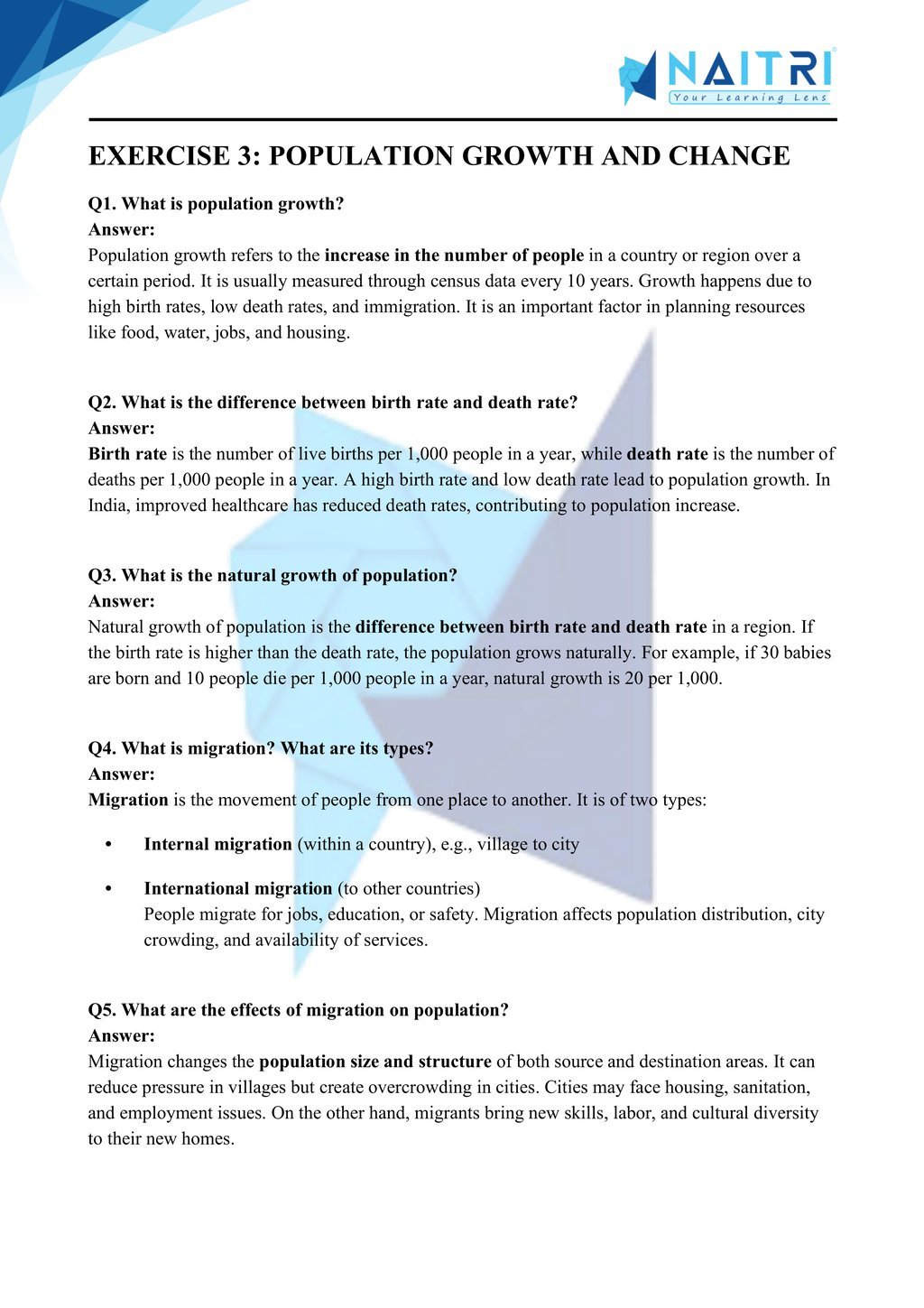
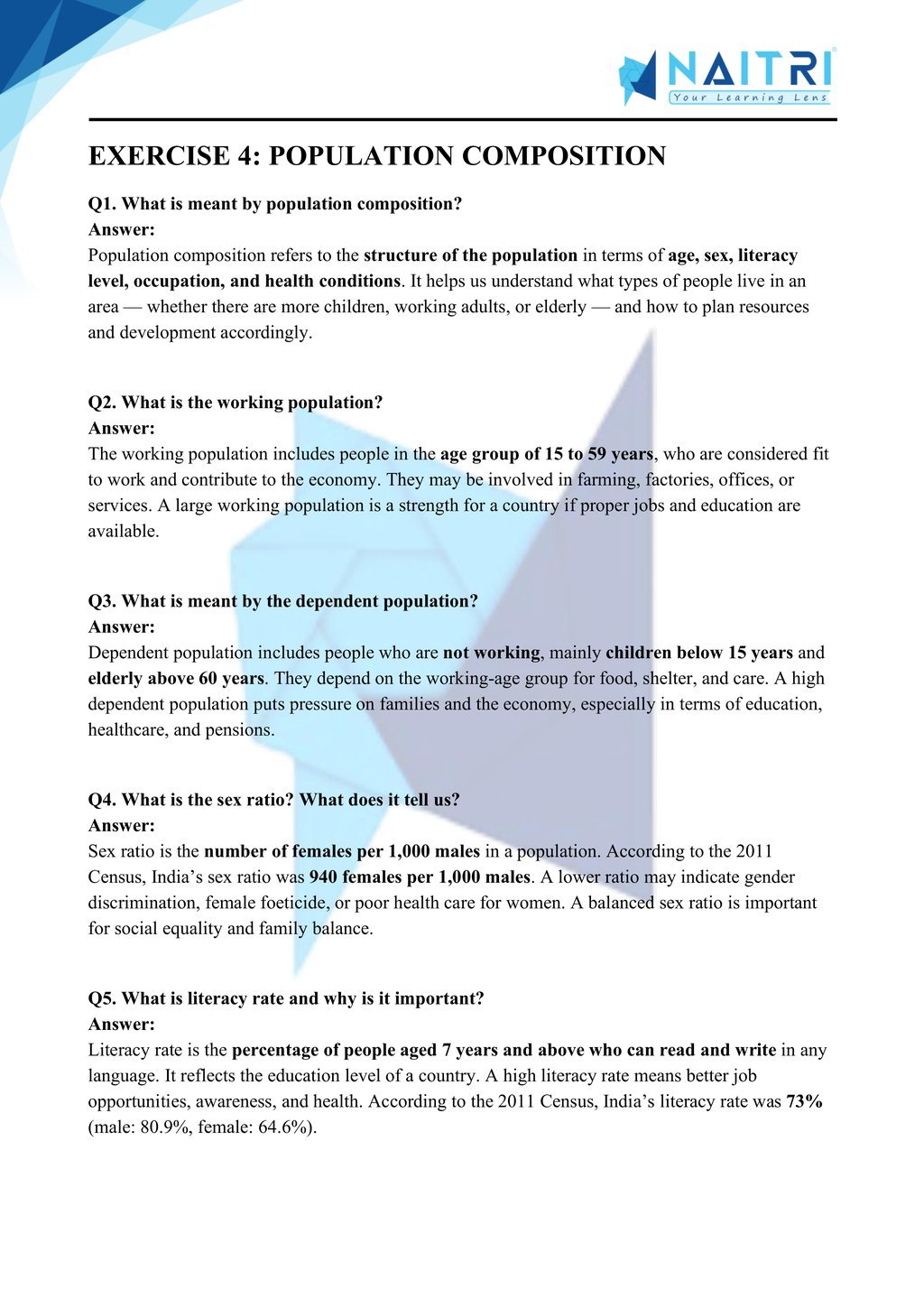
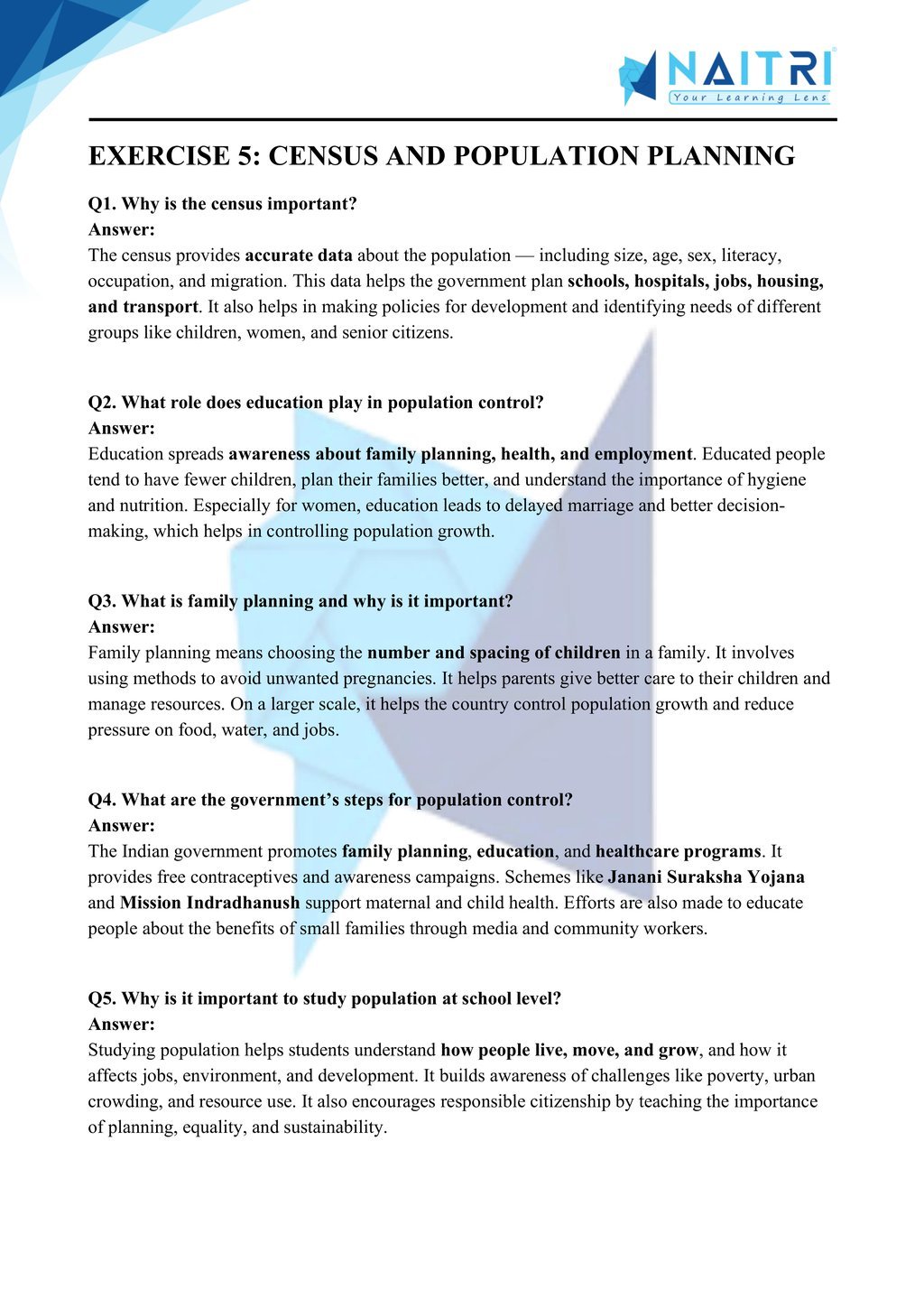
Experience Science Like Never Before – With AR!
Understanding Population is now more exciting and immersive! With the NAITRI App, you can explore complex geography concepts through Augmented Reality (AR). Visualize population density maps, migration patterns, and demographic shifts — right in front of you. Our AR-powered lessons make learning interactive, 3D, and fun, helping you retain concepts better and enjoy every topic.



Visualize . Interact . Understand . The future of learning is here
Population – Important Questions with Answers
1. What is population?
Answer: Population refers to the total number of people living in a specific area at a particular time. It is an important component of social and economic development.
2. Why is the study of population important in geography?
Answer: Studying population helps understand the distribution of people, pressure on resources, workforce availability, planning needs, and social-economic development in a region.
3. What was the population of India as per the 2011 Census?
Answer: According to the 2011 Census, India’s population was over 1.21 billion. It is the second most populous countryin the world after China.
4. What is population density?
Answer: Population density is the number of people per square kilometre. It helps measure how crowded or sparsely populated a region is.
5. What is the average population density of India as per 2011?
Answer: As per the 2011 Census, India’s average population density is 382 persons per square kilometre, with Bihar having the highest and Arunachal Pradesh the lowest.
6. What are the factors affecting population distribution in India?
Answer: Factors include climate, soil, water availability, topography, economic activities, and transport facilities, which influence where and how densely people settle.
7. Which state has the highest and lowest population density in India?
Answer: Bihar has the highest population density, while Arunachal Pradesh has the lowest, due to difficult terrain and harsh climate.
8. Define the term growth of population.
Answer: Population growth refers to the change in the number of people over time, usually expressed as an increase or decrease in a particular area.
9. What is natural growth of population?
Answer: Natural growth is the difference between birth rate and death rate in a population, showing how the population changes without considering migration.
10. What is positive and negative population growth?
Answer: Positive growth occurs when births exceed deaths; negative growth occurs when deaths exceed births, often due to poor health or migration.
11. What is the trend of population growth in India?
Answer: India has shown rapid population growth since independence, especially between 1951 and 1981, but the rate is now gradually declining due to awareness and family planning.
12. What is population composition?
Answer: Population composition refers to the structure of a population in terms of age, sex, literacy, occupation, and health conditions, helping understand societal characteristics.
13. What is the sex ratio?
Answer: Sex ratio is the number of females per 1000 males in a population. It helps in understanding gender balance and social conditions in a country.
14. What was India’s sex ratio as per 2011 Census?
Answer: As per the 2011 Census, India’s sex ratio was 943 females per 1000 males, showing a slight improvement compared to earlier decades.
15. What is the working population?
Answer: Working population includes individuals between the age group of 15–59 years who are economically active and contribute to production and services in a country.
16. What is the dependent population?
Answer: People below 15 years and above 59 years are considered dependent population. They rely on the working population for economic support.
17. What is occupational structure?
Answer: Occupational structure refers to the distribution of people according to their type of work, such as agriculture, industry, or services. It indicates a country’s level of development.
18. What are the three broad categories of occupations in India?
Answer: The three categories are primary (agriculture), secondary (industry), and tertiary (services). Majority of India’s population is engaged in agriculture.
19. What is the literacy rate?
Answer: Literacy rate is the percentage of people above the age of 7 years who can read and write with understandingin any language.
20. What is the literacy rate of India as per 2011 Census?
Answer: According to the 2011 Census, the literacy rate of India was 74.04%, with higher rates among males compared to females.
21. Why is literacy important for population quality?
Answer: Literacy enhances people’s employment opportunities, health awareness, productivity, and social status, contributing to the nation’s development and human resource quality.
22. What is the life expectancy at birth?
Answer: Life expectancy at birth is the average number of years a newborn is expected to live, based on the current mortality rates in the country.
23. How has life expectancy changed in India?
Answer: Life expectancy in India has increased significantly over the years due to better healthcare, nutrition, and sanitation, now reaching around 69.4 years (as per recent estimates).
24. How is population both a resource and a burden?
Answer: A well-educated and healthy population is a resource for economic development, while an unskilled and unemployed population becomes a burden on national resources.
25. What measures can be taken to improve population quality in India?
Answer: Measures include promoting education, healthcare, skill development, women empowerment, and family welfare programs, ensuring a balanced and productive population for the country.
Population focuses on the size, distribution, and composition of India’s population. Students explore factors affecting population distribution, population density, and growth patterns. The chapter discusses demographic data such as age structure, sex ratio, literacy rates, and occupational distribution. Understanding population dynamics is essential for planning development, education, employment, and infrastructure in a vast country like India.
Download Naitri App
Easy, Visual Learning — Right on Your Phone
Learn with Augmented Reality! The Naitri app makes CBSE and MP Board concepts interactive and fun — even in low-resource settings. Watch lessons, complete homework, take tests, and track progress — all in one place. Anytime. Anywhere.
Available on








